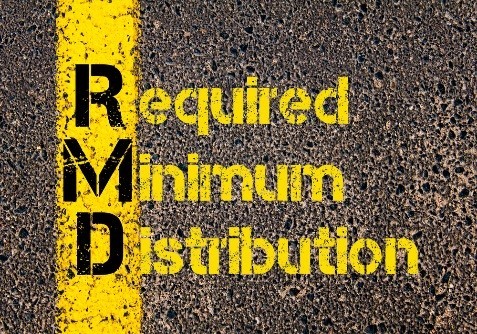Changes to Social Security Claiming Strategies 1
The Bipartisan Budget Act of 2015 included a section titled "Closure of Unintended Loopholes" that ends two Social Security claiming strategies that have become increasingly popular over the last several years. These two strategies, known as "file and suspend" and "restricted application" for a spousal benefit, have often been used to optimize Social Security income for married couples.
If you have not yet filed for Social Security, it's important to understand how these new rules could affect your retirement strategy. Depending on your age, you may still be able to take advantage of the expiring claiming options. The changes should not affect current Social Security beneficiaries and do not apply to survivor benefits.
File and suspend
Under the previous rules, an individual who had reached full retirement age could file for retired worker benefits--typically to enable a spouse to file for spousal benefits--and then suspend his or her benefit. By doing so, the individual would earn delayed retirement credits (up to 8% annually) and claim a higher worker benefit at a later date, up to age 70. Meanwhile, his or her spouse could be receiving spousal benefits. For some married couples, especially those with dual incomes, this strategy increased their total combined lifetime benefits.
Under the new rules, which are effective as of April 30, 2016, a worker who reaches full retirement age can still file and suspend, but no one can collect benefits on the worker's earnings record during the suspension period. This strategy effectively ends the file-and-suspend strategy for couples and families.
The new rules also mean that a worker cannot later request a retroactive lump-sum payment for the entire period during which benefits were suspended. (This previously available claiming option was helpful to someone who faced a change of circumstances, such as a serious illness.)
Tip: If you are age 66 or older before the new rules take effect, you may still be able to take advantage of the combined file-and-suspend and spousal/dependent filing strategy.

Restricted application
Under the previous rules, a married person who had reached full retirement age could file a "restricted application" for spousal benefits after the other spouse had filed for Social Security worker benefits. This allowed the individual to collect spousal benefits while earning delayed retirement credits on his or her own work record. In combination with the file-and-suspend option, this enabled both spouses to earn delayed retirement credits while one spouse received a spousal benefit, a type of "double dipping" that was not intended by the original legislation.
Under the new rules, an individual eligible for both a spousal benefit and a worker benefit will be "deemed" to be filing for whichever benefit is higher and will not be able to change from one to the other later.
Tip: If you reached age 62 before the end of December 2015, you are grandfathered under the old rules. If your spouse has filed for Social Security worker benefits, you can still file a restricted application for spouse-only benefits at full retirement age and claim your own worker benefit at a later date.
Basic Social Security claiming options remain unchanged. You can file for a permanently reduced benefit starting at age 62, receive your full benefit at full retirement age, or postpone filing for benefits and earn delayed retirement credits, up to age 70.
Although some claiming options are going away, plenty of planning opportunities remain, and you may benefit from taking the time to make an informed decision about when to file for Social Security.
Call us at 949-216-8459 to request your personalized Social Security Report. Even if we have provided you with a report in the past these changes may impact the outcome of that report!
What Are Required Minimum Distributions? 3
Traditional IRAs and employer retirement plans such as 401(k)s and 403(b)s offer several tax advantages, including the ability to defer income taxes on both contributions and earnings until they're distributed from the plan.
But, unfortunately, you can't keep your money in these retirement accounts forever. The law requires that you begin taking distributions, called "required minimum distributions" or RMDs, when you reach age 70½ (or in some cases, when you retire), whether you need the money or not. (Minimum distributions are not required from Roth IRAs during your lifetime.)
Your IRA trustee or custodian must either tell you the required amount each year or offer to calculate it for you. For an employer plan, the plan administrator will generally calculate the RMD. But you're ultimately responsible for determining the correct amount. It's easy to do. The IRS, in Publication 590-B, provides a chart called the Uniform Lifetime Table. In most cases, you simply find the distribution period for your age and then divide your account balance as of the end of the prior year by the distribution period to arrive at your RMD for the year.
For example, if you turn 76 in 2016, your distribution period under the Uniform Lifetime Table is 22 years. You divide your account balance as of December 31, 2015, by 22 to arrive at your RMD for 2016.

The only exception is if you're married and your spouse is more than 10 years younger than you. If this special situation applies, use IRS Table II (also found in Publication 590-B) instead of the Uniform Lifetime Table. Table II provides a distribution period that's based on the joint life expectancy of you and your spouse.
Remember, you can always withdraw more than the required amount, but if you withdraw less you will be hit with a penalty tax equal to 50% of the amount you failed to withdraw.6
1 3 4Broadridge Investor Communication Solutions, Inc. Copyright 2015.
2 http://mentalfloss.com/article/55599/15-delightful-facts-about-saint-patricks-day 5 http://www.pillsbury.com/recipes/bacon-and-cheese-quiche/19288cf4-0cdc-46cc-bc86-4c9bfa799695 6 gradientfinancialgroup.com Newsletter Insurance products and services are offered through Craig Colley | Coliday and is not affiliated with Gradient Securities, LLC. Some of these materials are provided for general information and educational purposes based upon publicly available information from sources believed to be reliable—we cannot assure the accuracy or completeness of these materials. The information in these materials may change at any time and without notice.
